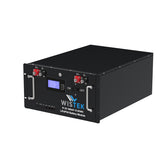Is 5kwh considered a lot
When people ask is 5kwh considered a lot, they are usually trying to understand how energy consumption relates to everyday life. A 5 Kwh measurement represents five kilowatt-hours of electricity, which is enough to power several household appliances for hours. Whether this amount is “a lot” depends on the context—such as comparing it to average household consumption, renewable energy output, or electric vehicle charging. In this article, we will break down what 5 Kwh really means, how it translates into real-world usage, and why understanding it matters for cost savings and sustainability.
- Understanding What 5 Kwh Represents
- Comparing 5 Kwh to Average Household Usage
- What Can 5 Kwh Power in a Home
- Is 5 Kwh Considered a Lot in Renewable Energy
- Is 5 Kwh Considered a Lot for Electric Vehicles
- Global Perspectives on 5 Kwh
- Situations Where 5 Kwh is a Lot
- Ways to Maximize the Value of 5 Kwh
- The Psychological Perspective of 5 Kwh
- Long-Term Importance of Understanding 5 Kwh
- Is 5kwh Considered a Lot
Understanding What 5 Kwh Represents
Definition of 5 Kwh
A kilowatt-hour is the standard unit of electrical energy used by utilities. 5 Kwh means five kilowatts of power consumed or generated over one hour. For example, a 1000-watt appliance running for 5 hours equals 5 Kwh.
Why 5 Kwh Matters
Knowing whether 5 Kwh is considered a lot helps people evaluate their energy habits. It can represent a small portion of daily household usage or a significant amount of renewable energy production depending on perspective.
Comparing 5 Kwh to Average Household Usage
Daily Household Energy Use
The average American household uses about 30 kWh per day. This means 5 Kwh accounts for roughly one-sixth of daily use. In smaller homes or energy-efficient apartments, 5 Kwh could represent an even larger share.
Monthly Energy Consumption
Over a month, households typically consume between 800 and 1000 kWh. Compared to that, 5 Kwh is not much. However, when calculated daily, it can cover lighting, cooking, and small electronics.
>>See also What is the meaning of 5kwh
What Can 5 Kwh Power in a Home
Kitchen Appliances
A microwave uses around 1 kW. Running it for 5 hours equals 5 Kwh.
An electric oven consumes about 2 kW per hour, so using it for 2.5 hours equals 5 Kwh.
Electronics and Devices
A laptop (50 watts) would need to run for 100 hours to consume 5 Kwh.
A television (200 watts) could run for 25 hours to reach the same amount.
Heating and Cooling
A medium air conditioner at 1.2 kW would reach 5 Kwh in about 4 hours.
A space heater at 1.5 kW would use 5 Kwh in about 3.5 hours.
Is 5 Kwh Considered a Lot in Renewable Energy
Solar Energy Example
A 1.5 kW solar panel system in sunny regions can generate around 5 Kwh per day. For small households, this is significant because it offsets lighting, electronics, and part of cooling costs.
Wind Energy Example
A small wind turbine might generate 5 Kwh in a day under good wind conditions. For rural homes, this can make a meaningful contribution to daily consumption.
Is 5 Kwh Considered a Lot for Electric Vehicles
Driving Range Comparison
Most electric vehicles consume about 0.25 kWh per mile. With 5 Kwh, an EV could travel about 20 miles. For city commuters, that can represent an entire round trip.
Cost Efficiency
If electricity costs $0.15 per kWh, then 5 Kwh costs $0.75. That means 20 miles of driving for under a dollar, making 5 Kwh very valuable in transportation.
Global Perspectives on 5 Kwh
United States
At $0.15 per kWh, 5 Kwh equals $0.75, a small portion of a daily bill.
Europe
With higher rates averaging $0.30 per kWh, 5 Kwh costs about $1.50, which may be considered more significant.
Developing Nations
In some countries, subsidized electricity means 5 Kwh may cost less than $0.25, making it affordable but still meaningful compared to average income.
Situations Where 5 Kwh is a Lot
Emergency Power Needs
During a power outage, 5 Kwh stored in a battery backup can run lights, phones, and even medical devices for several hours.
Off-Grid Living
For people relying on solar or wind, 5 Kwh can make the difference between comfort and shortage. In tiny homes, it may cover nearly all daily energy use.
Ways to Maximize the Value of 5 Kwh
Energy Efficiency Tips
Switch to LED lighting to reduce consumption.
Use smart thermostats to control heating and cooling.
Run appliances during off-peak hours.
Storage Solutions
A 5 kWh battery can store daytime solar energy for nighttime use.
Pairing batteries with solar panels ensures steady supply.
>>See also Why Duracell Batteries Should Last More Than Two Months Under Normal Conditions
The Psychological Perspective of 5 Kwh
Why It Feels Like a Lot
When people see 5 Kwh on an energy monitor, it may feel significant because it represents hours of continuous power for large appliances.
Why It May Not Be a Lot
In the context of monthly usage, 5 Kwh is small. However, when multiplied by daily use or rising costs, it becomes meaningful.
Long-Term Importance of Understanding 5 Kwh
Budget Planning
Knowing is 5kwh considered a lot helps in planning utility costs. If 5 Kwh costs $0.75, then 30 kWh per day costs about $4.50, leading to $135 monthly.
Environmental Impact
Using renewable sources to generate 5 Kwh daily reduces carbon emissions. Over a year, that equals nearly 1,800 kWh, which offsets significant fossil fuel consumption.
Is 5kwh Considered a Lot
So, is 5kwh considered a lot? The answer depends on perspective. For a single appliance, 5 Kwh can be enough to run it for hours. For a household, it is only a fraction of daily use. For renewable energy users or off-grid living, 5 Kwh can be critical. In terms of cost, it ranges from $0.25 to $2.00 depending on location.
Ultimately, understanding 5 Kwh helps people manage energy wisely, compare usage, and transition toward renewable solutions. Whether or not 5 Kwh feels like a lot, it has real value in both daily life and long-term sustainability.
























Leave a comment
All blog comments are checked prior to publishing